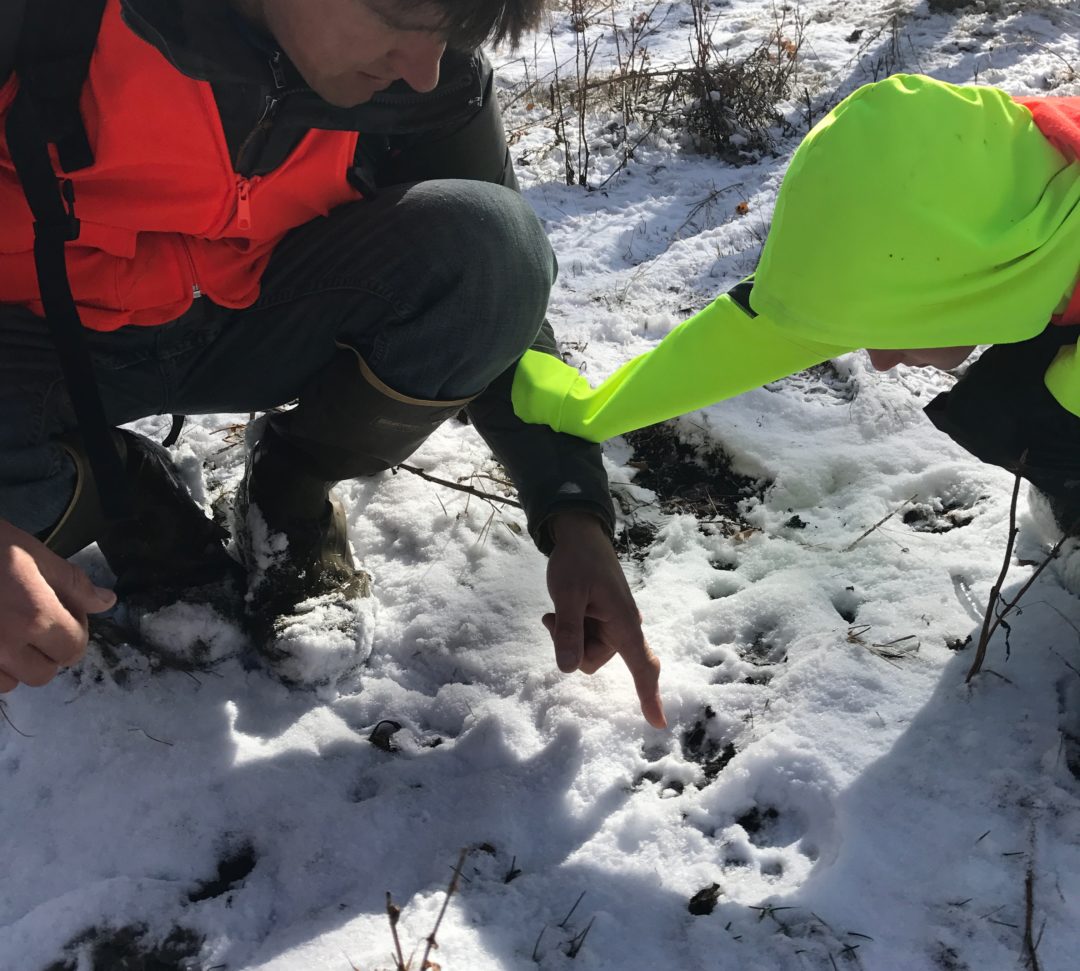When we woke up Saturday to a fresh layer of snow, we knew it would be a good morning for finding animal tracks. Sure enough, after about an hour of meandering along the creek bottom, we came across an exciting find… mountain lion tracks! It appeared to be a sizable male, who had traveled through during the night or very early morning, sometime after the new snow that started falling the night before. We followed the tracks for about a half mile, from snow patch to snow patch.

After the cat left the aspen stand where he we first encountered his tracks, we noticed an interesting pattern…he was traveling from one scattered Douglas fir tree to another across an otherwise open sagebrush slope. He didn’t appear to be climbing or bedding, but traveling through–perhaps to check scent posts along a regular route. While the mountain lion photo at the top was taken with a telephoto lens many years ago, we were definitely checking the trees as we walked under them–just in case! We are wearing orange because it was the first day of rifle season for elk…and wanted to stay safe while hiking.
Here is a short video describing how we identified the tracks.
George’s diagram below illustrates the differences between a dog and a cat track. These same features are true for all “dogs” and “cats” — you can use these tips to tell the difference between a wolf and a mountain lion, coyote and a bobcat, etc. Note that we are wearing orange in the photo below to stay safe while hiking – it was the first day of rifle hunting season for elk.

Finding evidence of a wild mountain lion is a rare treat. If you love these wild cats as much as we do, you might enjoy Lion in Lamar! The Story of a Mountain Lion Sculpture about George’s encounter with a mountain lion mother and the sculpture that came from the experience.
Photos: Jenny Golding and George Bumann

